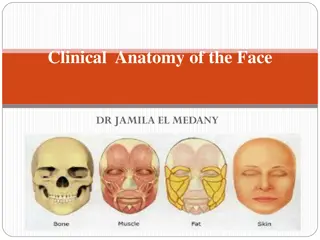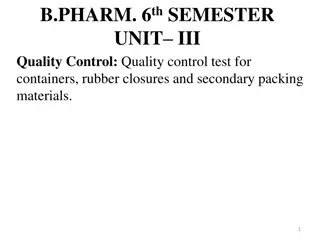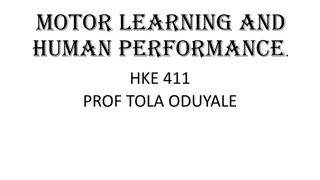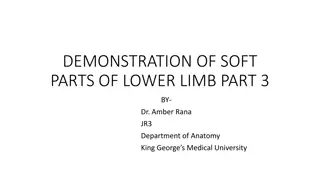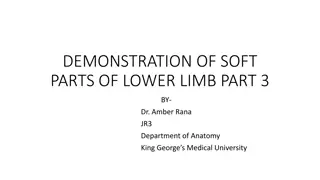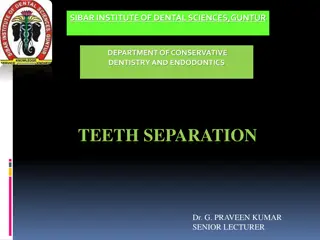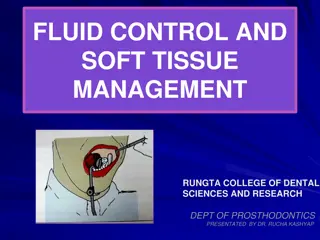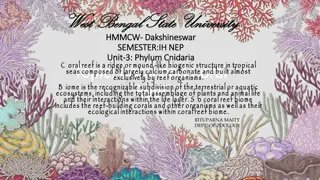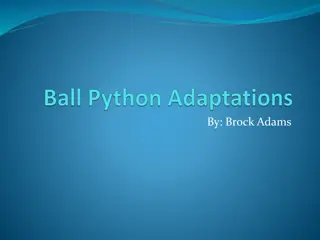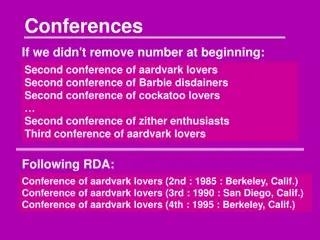Exploring Stretchiness: From Human Muscles to Rubber and Snakes
Learn about the fascinating world of stretchiness, from the elastic properties of human muscles containing the protein TITIN to the unique characteristics of rubber, snakes, and even the iconic Stretch Armstrong doll. Discover why some materials can stretch while others cannot, delving into the science behind elasticity and the intriguing capabilities of different organisms.
Download Presentation

Please find below an Image/Link to download the presentation.
The content on the website is provided AS IS for your information and personal use only. It may not be sold, licensed, or shared on other websites without obtaining consent from the author. Download presentation by click this link. If you encounter any issues during the download, it is possible that the publisher has removed the file from their server.
E N D
Presentation Transcript
IM I M ELASTIGIRL! ELASTIGIRL! cg
So, is it possible? In a word, no. Sorry folks, it s just not possible! Humans can t stretch a really long way and snap back . If we stretch a muscle too far, the muscle fibres pull apart. It s not possible for them to return to their original shape if we pull the fibres too far apart. If we stretch a whole human body too far, the consequences are quite disturbing. Think medieval torture and limbs coming off
What makes human muscles stretchy? While it s not possible for an entire human body to be super stretchy, our bodies contain one of the stretchiest substances on the planet. Our skeletal muscles- the ones that hold our muscles to our tendons and bones contain an elastic protein called TITIN that acts like a spring. Do you remember I told you chemical formulas can look crazy sometimes? Well, here is what the chemical structure of human titin looks like: C169 723H270 464N45 688O52 243S912 Titin is the biggest known protein and is named after the Greek Titans, meaning something very big . Interesting facts: Myofibrils- the small strands inside muscle fibres- are created when we are embryos. An adult human contains approximately 0.5kg of titin protein.
If a human cant be super-stretchy, what can? Rubber Snakes Stretch Armstrong Lycra
Rubber Rubber has some strange properties. When it is relaxed , the molecules that make it are tangled up. Stretch it until the molecules are lined up and it starts to change colour and the chains between the strands break. When the molecules are straight, it gets harder to stretch the rubber more. This is because you are now trying to pull apart the molecules. Another strange thing about rubber is it gets warm when it s stretched. The molecules behave like gas molecules, which get hotter when they are compressed (squashed). The volume of a rubber band is decreased when it s stretched. This means it takes up less space than before. Probably not the best material to be made of if you want to be super stretchy
Snakes How do snakes stretch themselves to eat such large prey? Snake skin and ligaments are very elastic and they have no breastbone (the bone in the middle of your chest). Most snakes only have vertebrae, ribs, and a skull, which allows their scaly skin to stretch without breaking bones. Snake skin is made of scales called scutes. When a snake grows a new skin, scales can change shape and get bigger, but there will always be the same amount. Scales are made of keratin and overlap. Keratin is the same thing human hair and nails are made of. Scales around the face and down the sides of a snake are smaller, allowing more space for them to stretch apart. For some snakes, a whole deer can fit!
Stretch Armstrong This doll was available from 1976 to the 1990s The outside of Stretch Armstrong was made of rubber. This was then filled with a gel or syrup made of cornstarch and water. These materials created something that we call ooblek, which is a thickening non- Newtonian fluid that can be used in bullet proof vests. The particles of cornstarch are big and touch each other. These particles float in the water, so when you move the mixture slowly, the particles slide past each other like a liquid. Because the particles are so big and close together, when you move the mixture quickly, the particles cannot move fast enough and compress (squash) together. They stay where they are and the mixture acts like a solid. Cool, huh?!
Lycra is a man-made material sometimes called Spandex or elastane. It is stronger and more durable (can be stretched more times before breaking) than natural rubber. Lycra This synthetic fibre is called a polyester-polyurethane copolymer. It was invented in 1958 by an American named Joseph Shivers. Lycra is used to make socks, swimsuits and clothing for exercise because it is resistant to bacteria and sweat and allows air to pass through. It s arch-enemies are chlorine, sunlight and heat, which weaken the structure of the fabric. The fibres can be stretched to almost 500% of their original length. If Elastigirl s suit was made of Lycra, she can stretch to several times her original size before her suit starts to overstretch and pull apart.
Poor Elastigirl. So, we have established that Elastigirl is just not possible; even snakes burst open when they eat too much, Stretch Armstrong s ooblek would break apart if she ran and elastic bands break easily. At least with Lycra, she could look good!





